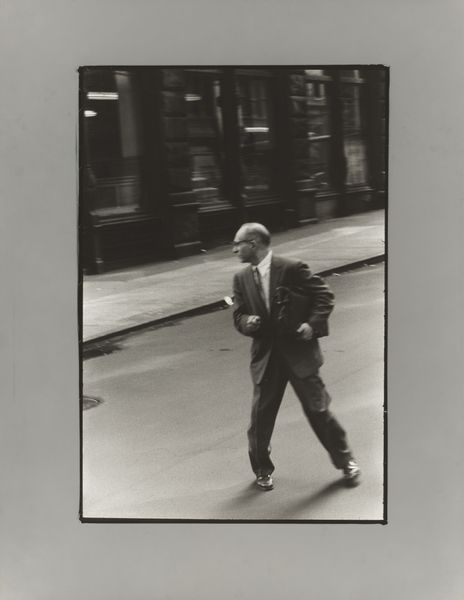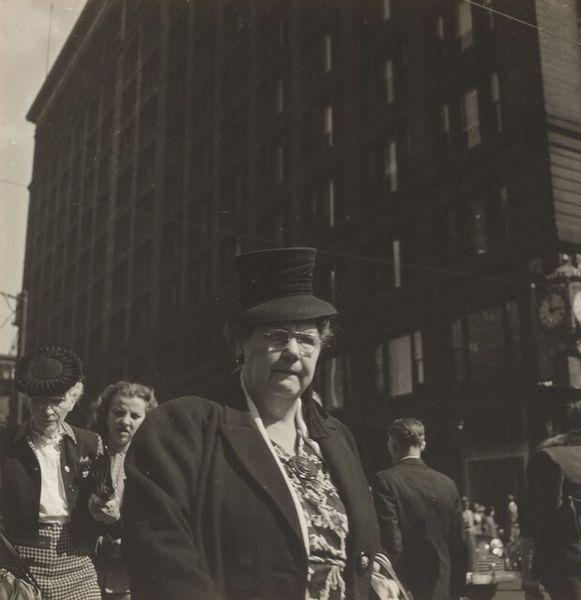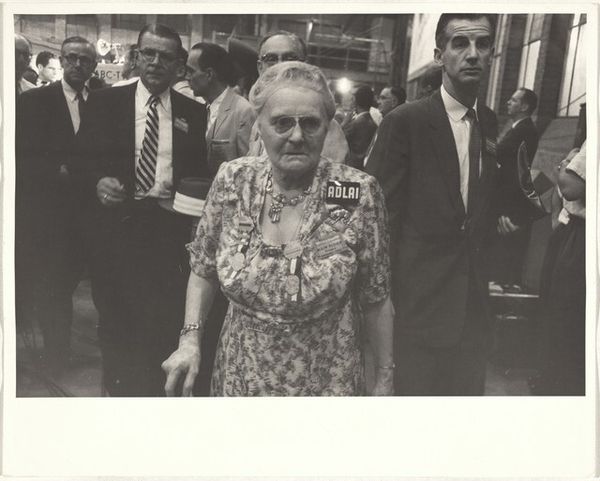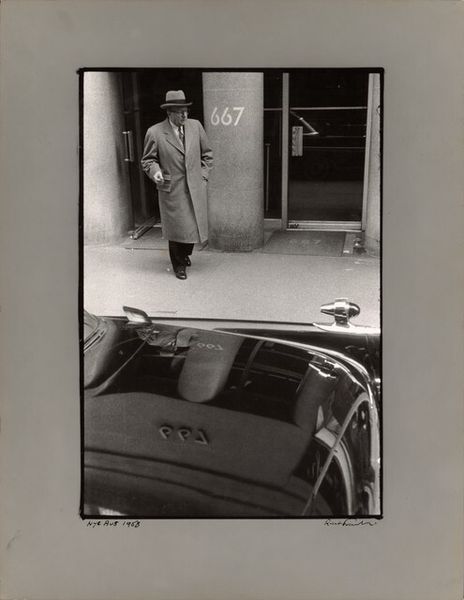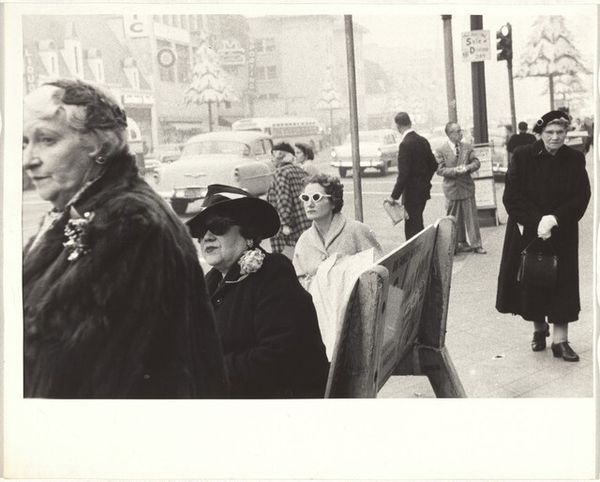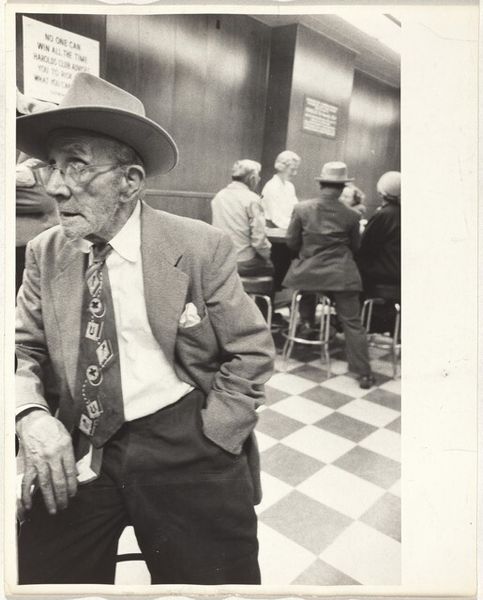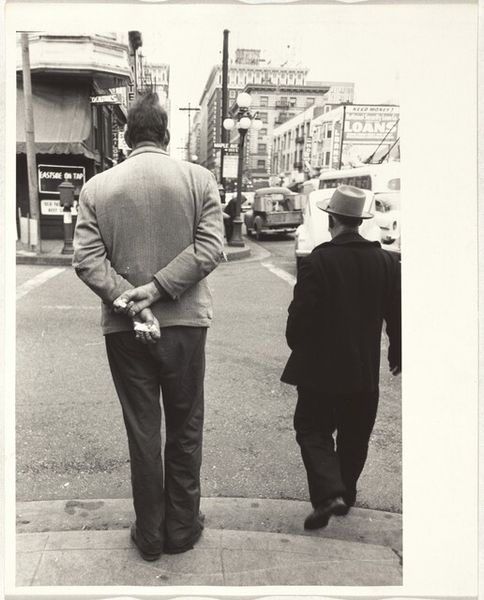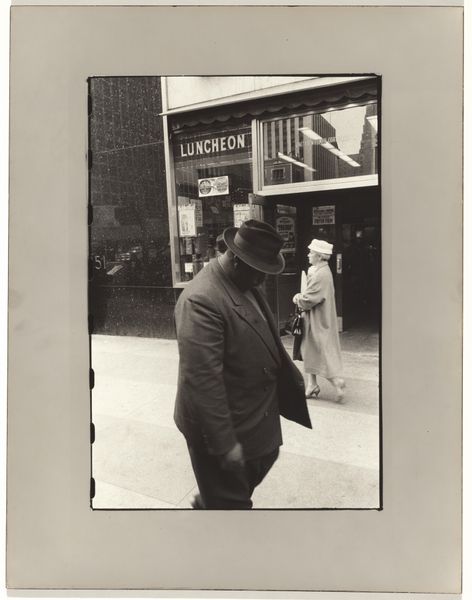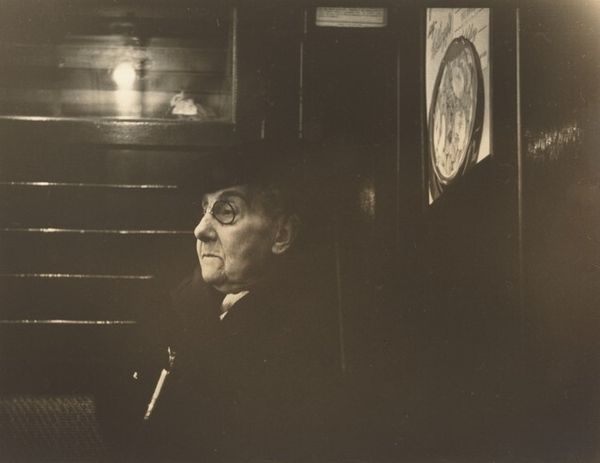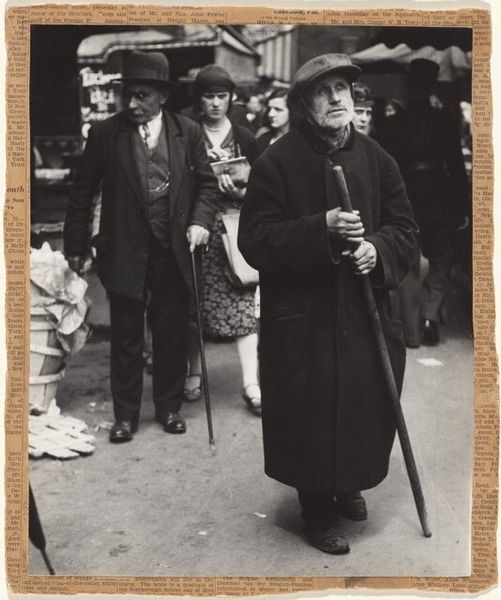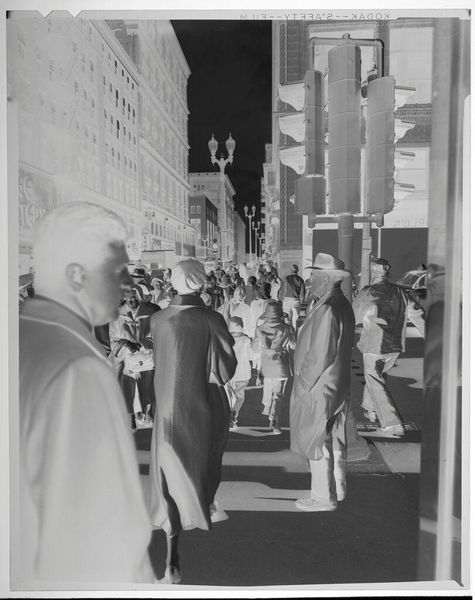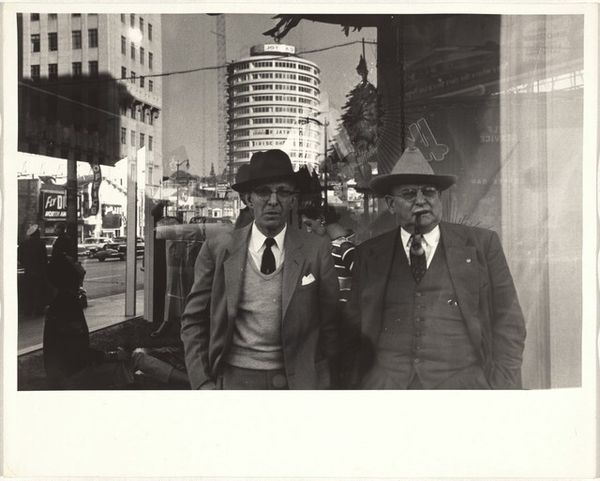
print, photography, gelatin-silver-print
#
portrait
#
print photography
# print
#
street-photography
#
photography
#
gelatin-silver-print
#
ashcan-school
#
cityscape
#
modernism
#
realism
Dimensions: sheet: 25.3 x 20.3 cm (9 15/16 x 8 in.)
Copyright: National Gallery of Art: CC0 1.0
Editor: Robert Frank's 1956 gelatin silver print, "Men crossing street--Chicago," has this melancholic, almost gritty feel. You’ve got these men dressed in suits amidst the backdrop of everyday city life. What do you see in this image beyond the surface? Curator: I'm drawn to the visible markers of class and consumption. Look at the newspapers tucked into the one man's pocket, juxtaposed with the delicate roses he holds. These aren't just details; they are material signifiers that reveal something about labor and leisure in mid-century urban America. What labor produced those newspapers, those flowers? Editor: So, it's less about the emotional state and more about the economic and social factors shaping the scene? Curator: Precisely. The Ashcan School influence is also present here - you know, that unflinching focus on everyday life, on labor. Frank isn’t sentimentalizing the city; he's documenting a moment where these tensions, class differences are unavoidable. And, what of the materials that have made it? Why black and white? Editor: To highlight the contrast in society perhaps? Make it obvious? Also it draws attention to textures. And how it must've been widely accessible, helping spread images of inequality. Curator: An interesting observation. Now consider how this image was consumed then versus how we consume it today. Has its meaning shifted based on cultural values and consumer behavior over time? Editor: I never thought about photography as a product with that sort of weight before! Curator: Thinking about materials—paper, chemicals, the photographer’s labor—repositions photography within systems of production, and highlights what’s changed, or hasn't changed, across decades. Editor: Right, I see your point. Focusing on how it was made and how people engage with the image gives it another dimension. Thanks for opening my eyes to this.
Comments
No comments
Be the first to comment and join the conversation on the ultimate creative platform.
